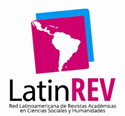Where to look at?
Cultural policies for movement in the South
DOI:
https://doi.org/10.21142/DES-1504-2023-0054Keywords:
Cultural policy, Contemporary Dance, Movement practice, Ministry of Culture, Culture industry, folkloreAbstract
We are bodies in trajectory. And our movements reflect specific experiences, changes in society and how we produce and reproduce culture. Although in Peru in the last 13 years — taking as a time frame the operational period of the Ministry of Culture— many measures and strategies have been implemented to promote the performing arts, little has been done specifically for dance. In this article I postulate that the logic and characteristics that we associate with the practice of stage dance in Perú are aligned with the dance industry produced from the Global North —economic value, forms of labour, management strategies— and that it has not been carried out an in-depth analysis of the ways to create, produce and participate in dance in our country, which would allow us to introduce a globalized body, collective creation and small formats. For this reason, the policies applied to dance do not yet generate substantial changes for the take-off of the local sector, but rather they deepen the problems associated with cultural industries, and strengthen the Western view of southern bodies.
Downloads
References
Agamben, G. (2009). What is an apparatus? And other essays. Stanford University Press
Arguedas, J. M. (2019). El folklore y las academias. El Comercio. https://elcomercio.pe/eldominical/folklore-academias-noticia-632768-noticia/?ref=ecr
Banes, S. (1981). Democracy's body: Judson dance theatre and its legacy. Performing Arts Journal, 2(5), 98-107.
Banes, S. (1987). Terpsichore in sneakers. Wesleyan University Press.
Bhargav, A. (2012). Rigid dichotomies. The Hindu. http://www.thehindu.com/todays-paper/tp-features/tp-sundaymagazine/rigid-dichotomies/article13375988.ece
Consejo Nacional de Danza Perú (2018). Agenda de innovación para la danza escénica en Lima, Trujillo y Arequipa. Atiq.
Cvejić, B. (2005). Collectivity? You mean collaboration. http://republicart.net/disc/aap/cvejic01_en.pdf
Decreto Supremo N.º 005-2013-MC. Decreto Supremo que aprueba el Reglamento de Organización y Funciones del Ministerio de Cultura (2013).
Gonzales, P. (2021). Los indios [a bailar] en su sitio: Implicaciones de las nociones de lo andino en las representaciones escritas de la danza escénica nacionalista en el Perú. [Tesis de licenciatura en Danza, Pontificia Universidad Católica del Perú].
Ministerio de Cultura del Perú. (2020). Política Nacional de Cultura al 2030. https://cdn.www.gob.pe/uploads/document/file/1025961/PNC_VERSIÓN_FINAL_2.pdf?v=1595329988
Lambert-Beatty, C. (2008). Being watched. Yvonne Rainer and the 1960s. MIT Press.
Lazzarato, M. (1996). Immaterial Labour. En P. Virno y M. Hardt, M. (eds.), Radical thought in Italy. A potential politics (pp. 133-147). University of Minnesota Press.
Lepecki, A. (2006). Performance and the politics of movement. Routledge.
McRobbie, A. (2016). Be creative. Making a living in the new culture industries. Polity Press.
Martin, R. (2004). Dance and its others. En A. Lepecki (ed.), Of the presence of the body. Essays on dance and performance theory. Wesleyan University Press.
Parra, M. (2009). Poder y estudios de las danzas en el Perú. [Tesis de licenciatura en Sociología, Universidad Nacional Mayor de San Marcos].
Pontificia Universidad Católica del Perú. (2020). Revelando el movimiento. Historias de la danza moderna y contemporánea en el Perú. Facultad de Artes Escénicas de la Pontificia Universidad Católica del Perú.
Vaquero, J. (Ed.). (2016). Cuerpos achorados. (1.ª ed.). Agencia Española de Cooperación Internacional para el Desarrollo, AECID.
Wikström, J. (2016). Practices of relations in Task-dance and the event-score: towards a new concept of performance in art. [Tesis doctoral, Kingston University].
Downloads
Published
Issue
Section
License

Esta obra está bajo una licencia http://creativecommons.org/licenses/by-nc-sa/4.0/



















